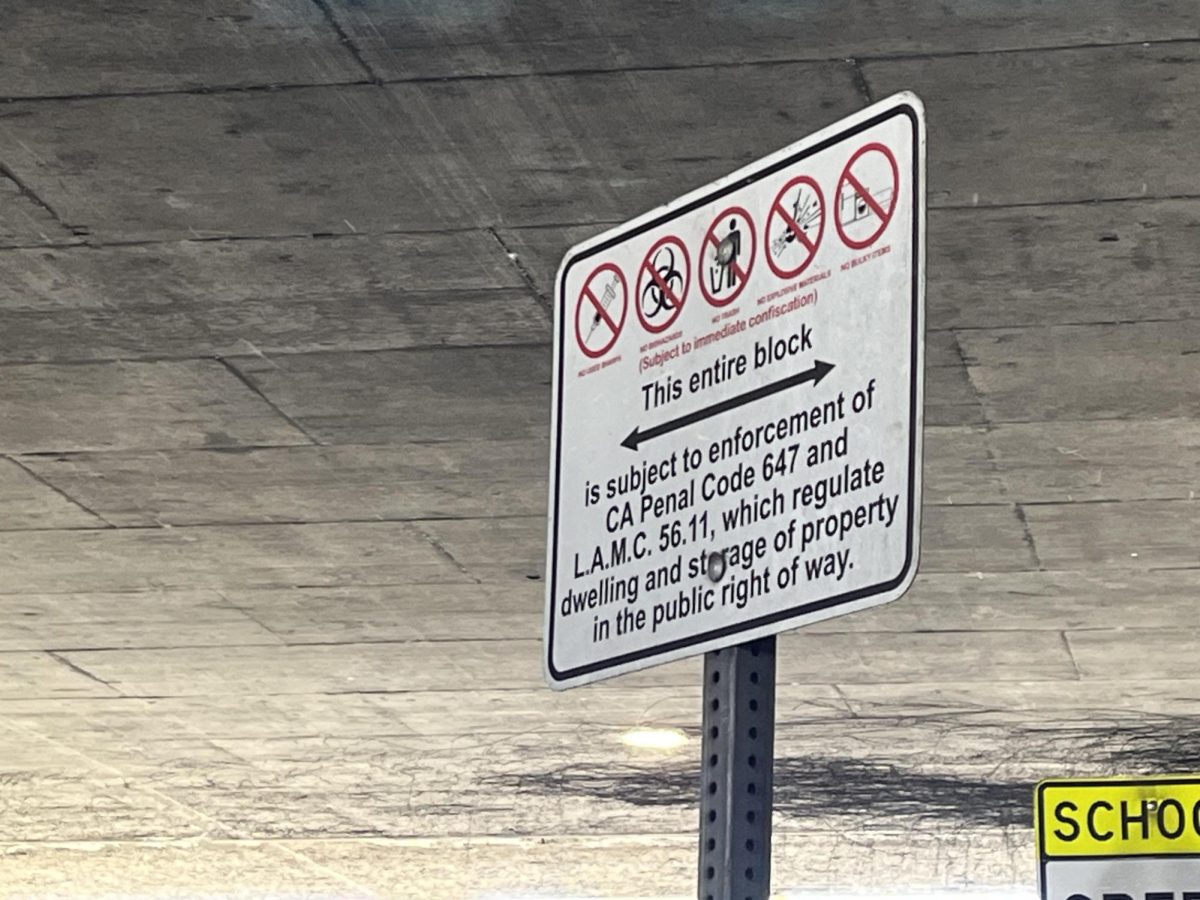Off the streets
Nathan Engman
Recent state legislation and court rulings have been targeted at clearing homeless encampments
September 26, 2024
On June 28, 2024, the Supreme Court released the City of Grants Pass vs. Johnson decision, authorizing cities to arrest and fine unhoused individuals for sleeping outside, even when there is a lack of shelter beds available. On July 25, 2024, Governor Gavin Newsom issued an executive order directing local and state officials to dismantle homeless encampments in cities. Both of these actions have received mixed reactions from homelessness experts.
While Mayor Karen Bass has spoken out against Newsom’s executive order, there are still current city laws that achieve a similar effect, most notably what’s called Los Angeles Municipal Code, Section 41.18, a law that criminalizes sitting, sleeping or lying in particular areas of Los Angeles. When a 41.18 location is declared, law enforcement will go in and perform a “sweep,” forcing people to relocate at a moment’s notice while not providing the necessary services to aid the individuals. Any personal belongings, including IDs, cell phones or checks left in this area are subsequently trashed, making it even harder for the unhoused to get access to the support services they need.
Stephanie Caridad is the Executive Director of NoHo Home Alliance, a non-profit organization that aids individuals experiencing homelessness in the East San Fernando Valley. NoHo Home Alliance is on the front lines of the homelessness crisis, operating a drop-in access center for unhoused people every Monday, Wednesday and Friday and providing low barrier services to individuals living on the street. In her position, Caridad has seen firsthand the effects recent government actions have had on the lives of homeless people in Los Angeles County.
“These solutions, while well intentioned, rely on the false assumption that [our guests] have somewhere to go and resources to take advantage of,” Caridad said. “By sweeping someone and their belongings away, you’re solving the visibility of the problem, but you’re not actually ending their homelessness, only helping to further entrench them in their struggle.”
In the current crisis, a misconception is that there are sufficient resources available for individuals experiencing homelessness. According to a December 5, 2023 homelessness audit released by the Los Angeles City Controller, Kenneth Mejia, there are an estimated 46,260 people experiencing homelessness in the city and only 16,100 interim housing beds available.
A major contributor to the current homelessness crisis is increasing rent prices. According to a May 2024 Zillow Rental Market Report, the price of “typical rent” in Los Angeles has grown to $2,920 a month, meaning that individuals need to have a salary upwards of $117,000 in order to live comfortably. Caridad argues that more robust rent control measures need to be implemented in Los Angeles, just like in other cities such as New York or Washington D.C.
Caridad asserts that the homelessness crisis, as big as it is, is solvable given the right actions. She believes that the city needs to institute more preventative measures in order to stop more people from falling into homelessness, rather than criminalizing it.
“There are many paths forward to solve the homelessness problem permanently,” Caridad said. “In November, every voter in LA county is going to have a chance to implement ‘Measure A,’ a measure that would fund homelessness services and affordable housing efforts. The response, rather than criminalization, should include rent control and tenant protections on the preventative side and sustainable funding for homeless services to help people who are suffering currently.”





















